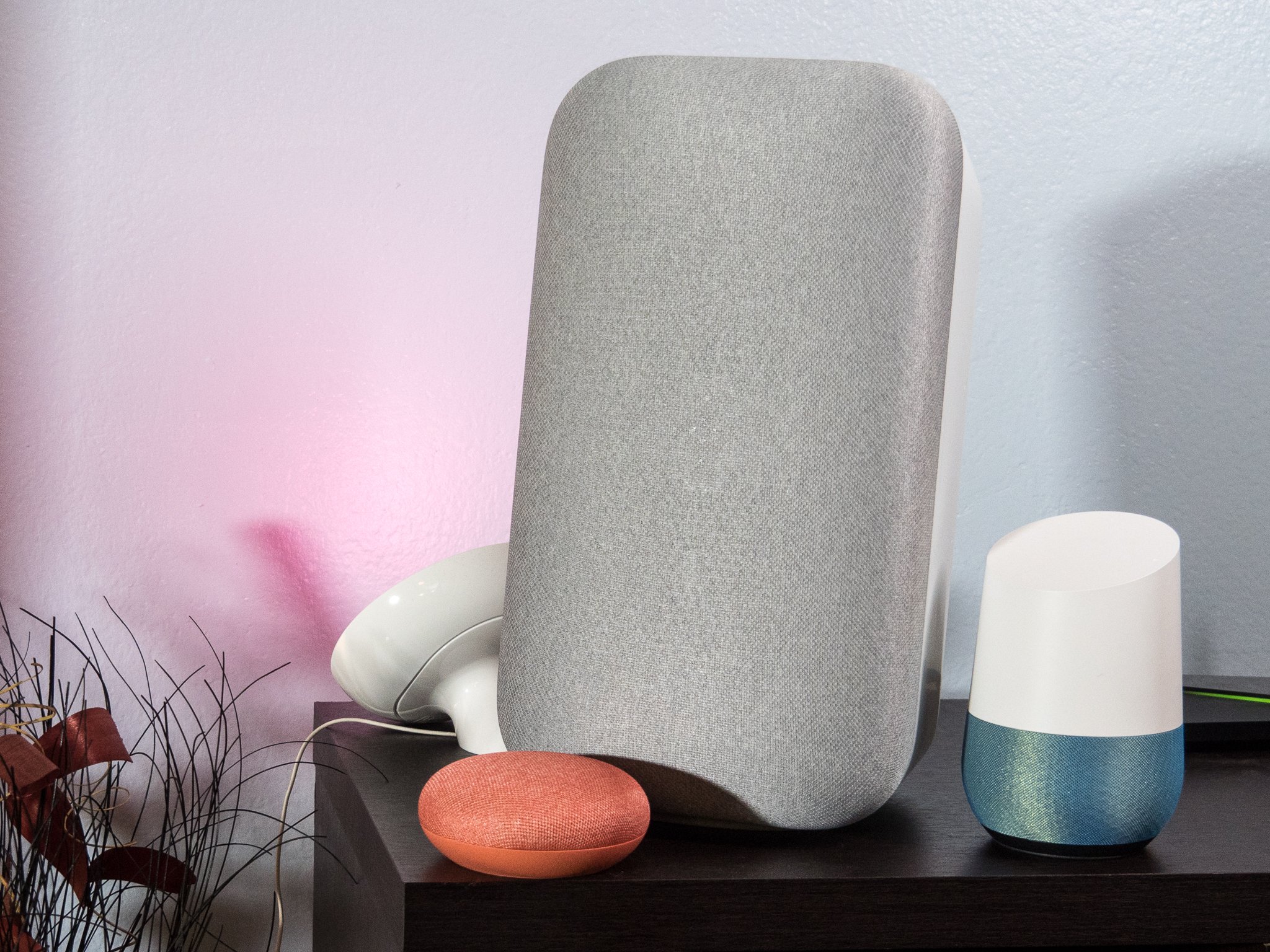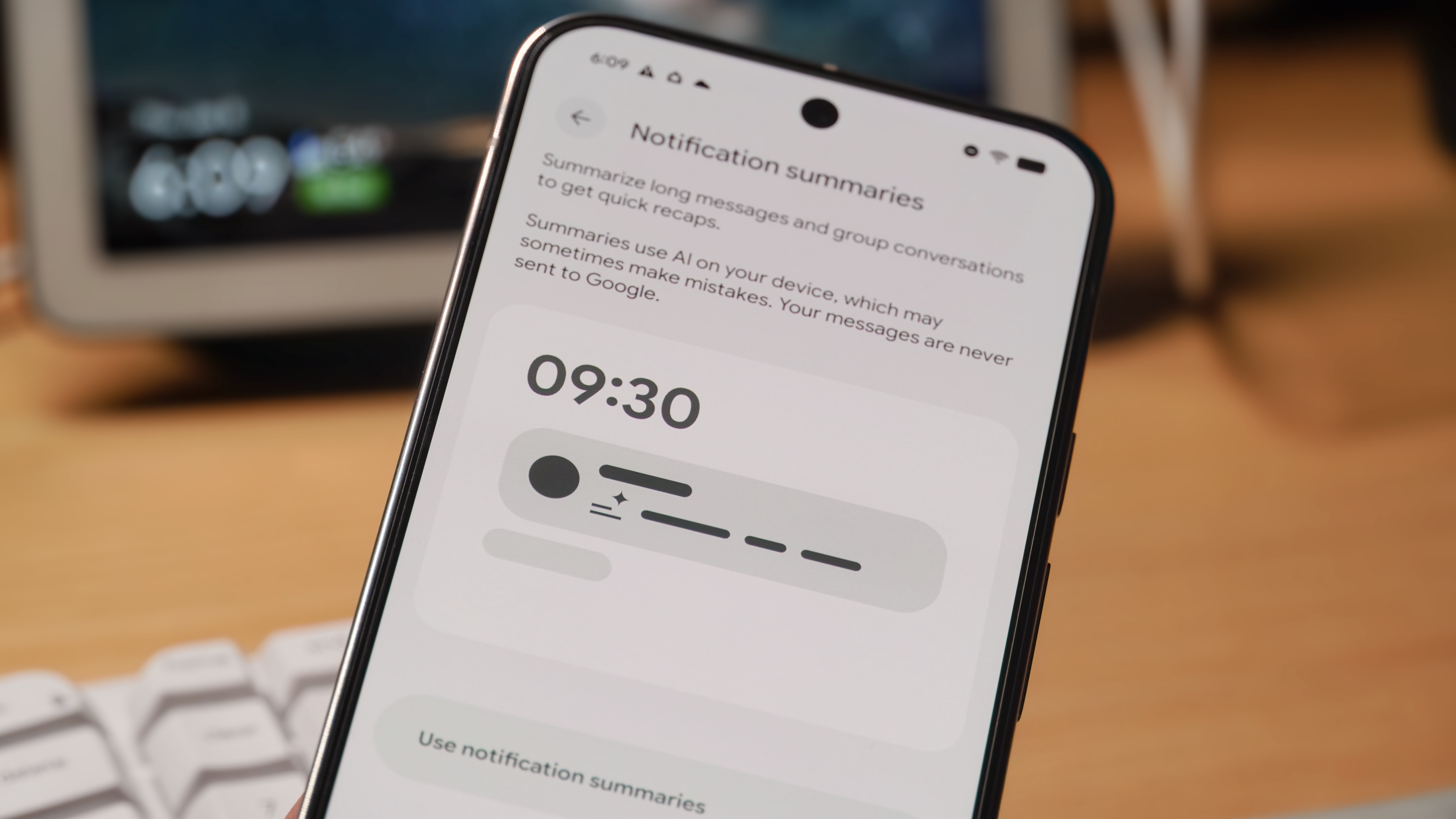The quick take
This is an oversized version of Google Home. It does all the same stuff — it just sounds way better while doing it. Music, information, communication, all that same stuff. And it does so with a much heftier price tag and physical footprint.
The Good
- Good sound for music
- AI-enhanced "smart sound" adjusts to the environment
- Superb far-field microphones
- Fills a hole in the top end of the lineup
The Bad
- Volume swipe is clunky, at best
- Doesn't fix the flaws in Google Home's ecosystem
- The color and design are a bit drab for a speaker
- Doesn't stand out amid other ways to do music at home
See at Best Buy See at Verizon See at Google
Watch this
Google Home Max Video Review
OK, Google — Go big
Google Home Max Full review
The general rule is that the heavier something is, the better it is. That's especially true for loudspeakers, because speakers need magnets, and magnets are heavy. And that's what's running through my mind as I attempt to lift the new Google Home Max out of its shipping box.
Get the latest news from Android Central, your trusted companion in the world of Android
I say attempt because the retail box is top-heavy, and some damned fool put the side handles on the bottom. So this is going to take some finagling. That's an interesting first contact with Google's $400 (OK, $399), massive version of Google Home — the smart speaker it introduced back in 2016. But it's fitting considering this thing's name. And the name is fitting.
Google Home Max.
Building out the full range ...
This is a big speaker. And somebody has big expectations for the living room. And in a vacuum, Google Home Max is a pretty good speaker. It's maybe a bit on the expensive side, but not horribly so.
| Category | Specs |
|---|---|
| Price | $399 |
| Speakers | Two 4.5-inch woofers, two 0.7-inch tweeters |
| Colors | Chalk, black |
| Size | 13.2 x 7.4 x 6.0 inches |
| Weight | 12 pounds |
| Connections | Bluetooth, Wi-Fi, Ethernet via USB-C |
| Other | Far-field microphones, 3.5mm audio-in |
But let's go back to the beginning. Google Home — the product — was Google's first real leap into the smart home category. It's roughly the size of a large travel mug, smartly flashes lights at you while it's listening and speaking, and connects a bunch of the major parts of Google in one place. The "knowledge graph" — all the answers and information Google can throw back at you. Services — music, for one, and the ability to control other connected devices, for another. Now it's thrown communications into the mix, with the ability to make legitimate phone calls to anyone, anywhere. And at first, it was pricey, closing in on $200. That's since fallen to under $100, though. (At least at sales prices.)
Yes, Google Home was the answer to the Amazon Echo.
Then there's the newish Google Home Mini. A mere $50 (even less on sale). Smaller, cheaper. But does exactly the same things as its big brother.
Yes, Google Home Mini was the answer to the prolific Amazon Echo Dot.
But what to do about the high end? With Amazon squarely in its sights, it was time to turn to another competitor, one that's secured its place in the pantheon of wireless music. Sonos.
That's where Google Home Max comes in. It absolutely surpasses any of the Amazon Echo speakers in terms of sound quality. They're just in different classes. Now Sonos? That's a worthy competitor.
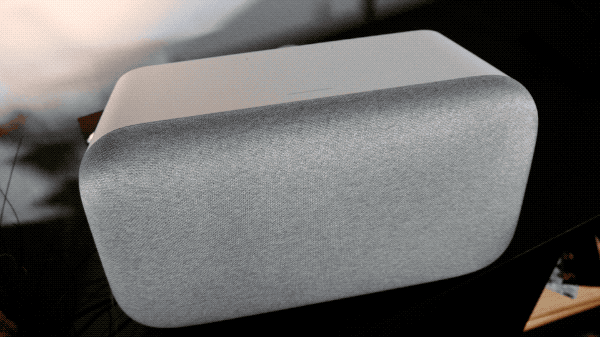
Using Google Home Max
Once you get the Max out of the box (again, what's up with the handles on the lower edge of the box?), you're back to what Google's become really good at — the first-run experience. There's very little in the box to get in your way. A couple quick-start sheets, and the power cord (I love that there's no wart and that it doesn't take up any outlet space), and that's it.
Do take care to note the little rubber base that's attached to the bottom of the Max, though. It helps dampen vibrations and keep the speaker in place, and you'll need to remove it — it peels right off, held in place by a slight magnetic bond — and move it to the left face of the speaker if you're going to use the Max vertically. (Hint: you'll always want it on the edge closest to the power port.) I actually missed seeing the base as I unboxed the Max, and it took me a couple minutes to find it. It's pretty thin and discreet.
You'll set up the Max like you do any of the other Google Home devices — in the Google Home app. In fact, your phone should recognize that there's a new speaker waiting to be paired with your Google Account. (Again, Google's gotten really good at the onboarding process.) That takes just a minute or so, and you're done.
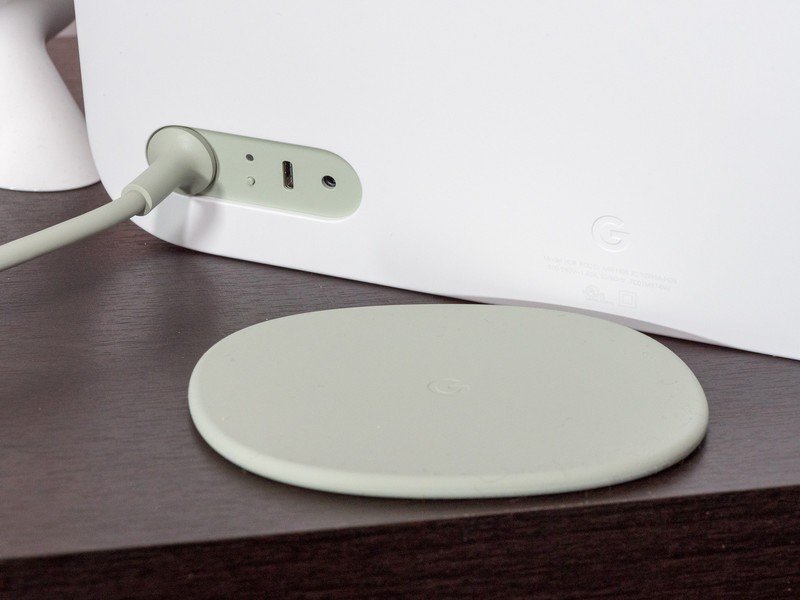

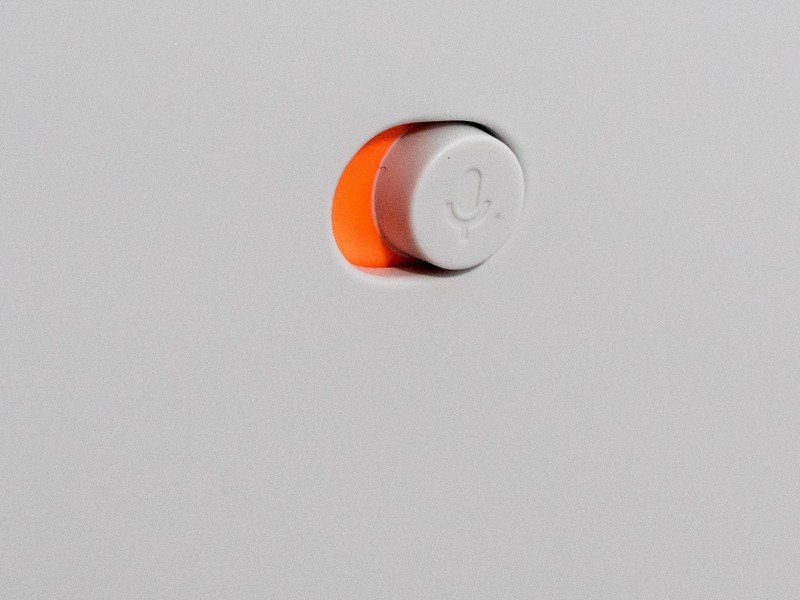
And that's it. You now have a Google Home speaker that sounds really good. And, in fact, it'll get better over time. I found it to be a bit light on the low end at first. But the Max has a cool feature called "Smart Sound," which uses the built-in microphones and a bit of "artificial intelligence" (because what doesn't these days, right?) to listen to your environment and how the sound is bouncing around, and it'll adjust accordingly. And automatically. Sonos has this sort of thing, too, called "Trueplay tuning." But you set it by waving your iPhone (and only your iPhone) around in the air for a minute while it listens in. Score one for built-in mics.
Point is, the more I listened, the better things started to sound. Some of that, of course, has to do with the source material. Google Home Max doesn't magically add bass to Metallica's "... And Justice For All," which famously gave the shaft to the low end. It does, however, make the Ed Sheeran/Beyonce duet of "Perfect" sound gorgeous. And Kendrick Lamar's "DAMN." hits with all the urgency and punctuation that it's supposed to. Older, more compressed music still sounds like older, more compressed music. But newer, louder stuff? It fills the room as it should.
Ever wish your Google Home had a really good speaker? This is it.
A single speaker is fine. Google Home Max can get pretty damn loud. (Like Sonos, Google doesn't give the exact wattage.) And it fills a room pretty well. Two speakers, though, would be even better. You can make a stereo pair out of a couple Maxes. And while $800 is hardly chump change, it's really not out of line for good stereo equipment. Am I sorry I didn't buy two? A little.
On the other hand, that'd just give me two institutional gray speakers to deal with. OK, Google calls it "chalk." I call it bland. That sort of color scheme works fine for the smaller Google Home, especially since you can just tuck it into a corner somewhere. But the Max is going to be less inconspicuous. And there are no threads on this thing for mounting to the wall (that's something Sonos includes) or to a speaker stand. But you do, at least, get the option of using it horizontally or vertically. And Google smartly made it so the lights behind the fabric grille adjust accordingly.
The Max doesn't take long to get comfortable with. It's a pretty good speaker that does everything I've been doing on Google Home and Google Home Mini. Set it up, crank it up, and enjoy. The far-field mics are pretty damn impressive when the music is going, too.
But Google Home Max doesn't live in a vacuum
I like Google Home Max a lot. I also like Sonos a lot. And I think Chromecast is one of the best things Google's come up with in a long, long time. Those three things are all living in my living room simultaneously, so it's time for a little introspection.
A full Sonos system or a Chromecast hooked up to your home entertainment system makes Google Home Max a tough sell.
Sonos sounds a little better. MyPlay:5 just has a slightly fuller sound for $100 more. It's closer, I think, to the Play:3, which runs $50 cheaper. But Sonos ultimately is a different product than Google Home. It's lacking all the "smart" stuff — and while that's something it's starting to add in products like the Sonos One (which will get Google Assistant at some point in 2018) I've been less than blown away in its implementation of Amazon Alexa. But Sonos is a full system. Multiple music services under one roof, using a single app. (And the ability to change groups of speakers on the fly is a big win over Google Home.)
Then there's Chromecast — Google's protocol for easily — and inexpensively — piping music into all kinds of things. Many TVs already have Chromecast baked in. A number of speakers do, too. I've got a relatively inexpensive soundbar — (Vizio's 2016's SB3851-D0, which goes for about $250 these days) and also is a Chromecast target and sports a couple rear speakers and a subwoofer. And the more I think about it, the more that $250 setup hits my living room just fine, compared to the $400 I just spent on the Google Home Max — or double that if I did a stereo pair like I really want to.
And if you've got an NVIDIA Shield TV, it's already good Google Assistant blasting through whatever audio setup you're rocking.
So as is always the case when it comes to audio equipment, a lot of this is going to come down to personal choice. How do you want to do music where you live? And how much do you want to spend on it?
The bottom line
Should you buy it? Sure
The bottom line on Google Home Max is that it's a compelling product. It sounds good as a speaker. It works great as an oversized Google Home. It's a darn good product for Google.
Google Home Max is really good. But there are better alternatives.
But there's nothing revolutionary here. There's nothing in Google Home Max that I can't do as well — if not better — than with, say, a Sonos setup. Or with a decent home theater system. And then you make up for the missing Google Assistant experience with an inexpensive Google Home Mini.
To be fair, that's the same argument I've made with Amazon Echo. It's just exacerbated by the fact that Chromecast is so good and has made it possible to easily (and inexpensively) bring streaming audio to all kinds of devices. It's the result of Google doing a good thing maybe too well for its own good.
Google Home Max is a pretty good speaker and a good addition to the Google Home lineup, which was lacking anything at the high end. But you're going to have to really want it. And Google's going to have to work to persuade folks to buy it.
